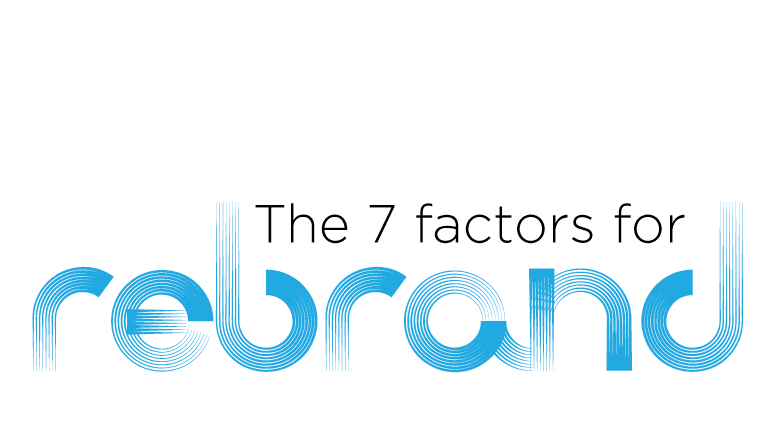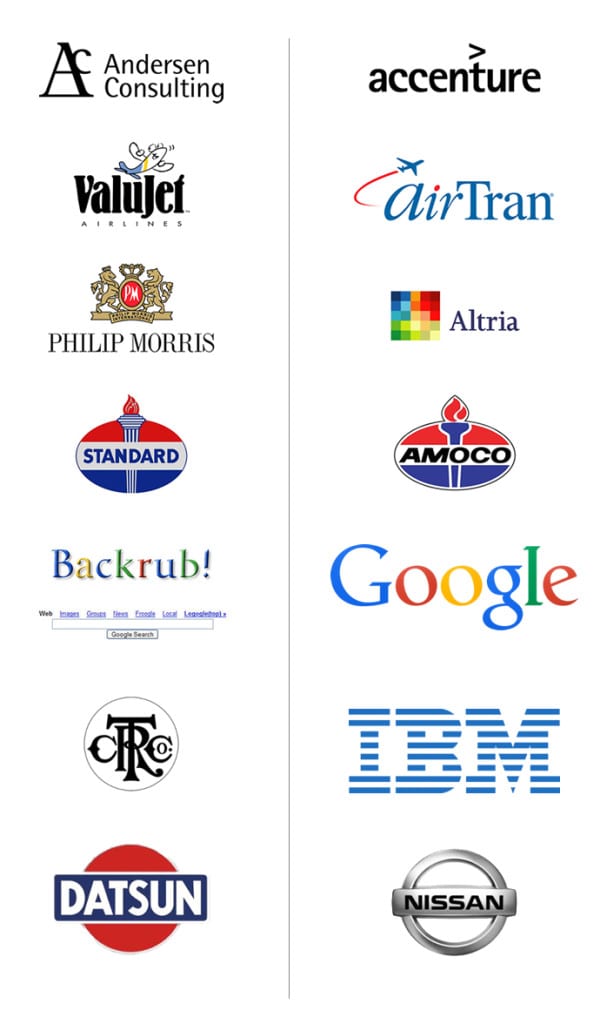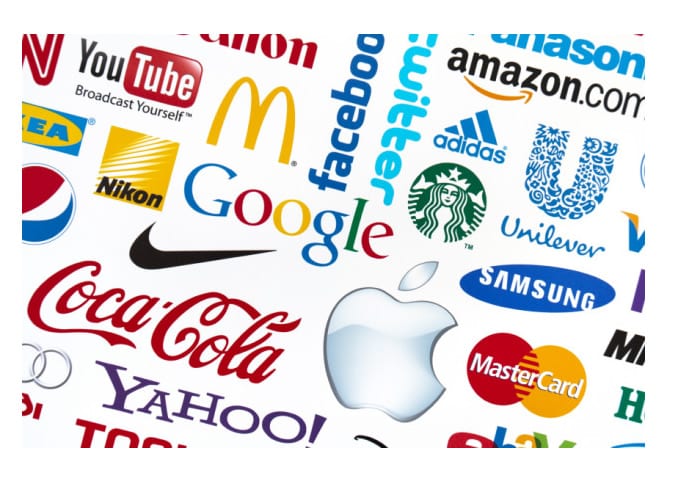
There are many factors to consider when evaluating the decision to rebrand your company. Typically you’re gripped with a sense of bewilderment as the word ‘rebrand’ typically means ‘change.’ This is always difficult, especially when you’re the one responsible for the success and longevity of your company.
Faced with undulating marketplace circumstances—a rebrand may be the only viable option you have to remain competitive. The entrance of new competitors, commoditization, internal changes and changing customer attitudes may have weakened your company’s ability to accurately articulate your unique value proposition. Perhaps you’ve been knocked off by faster, more agile competitors with more aggressive marketing tactics than your own or you let things get away on you by not keeping up to date on massive disruption that is taking place across various industries.
Whatever the case, re-branding can be a good thing. It signifies a stage in your business’ maturity and growth. It is an opportunity to more closely examine your mission, purpose and the betterment of your company.
Brand development can be a catalyst for innovation—an opportunity to develop your current processes. It can bring clarity and alignment to you and your stakeholders and spur employee motivation. In the end this tunes up your company’s internal engine where the end result is customer satisfaction and increased profitability.
To help you understand the main reasons most business owners choose to rebrand, we’ve listed 7 factors that will help you determine if now is the time to consider a rebrand.
1. Name change
Our name no longer fits who we are.
Naming is a long and difficult process. Most viable domain names have been taken or are listed as premium listings because of their necessity and acclaim. Be prepared to pay for a high-quality name or be prepared to make one up. Start at Name.com to check out the availability of your domain. Work with a branding agency to help you come up with a meaningful, memorable and viable choice. Your name is the most important branding element of your business. A recent example is when Anderson Consulting became Accenture. Anderson Consulting changed their name due to global market expansion. “On January 1, 2001 Andersen Consulting adopted its current name, “Accenture”. The word “Accenture” is supposedly derived from “Accent on the future”. The name “Accenture” was submitted by Kim Petersen, a Danish employee from the company’s Oslo, Norway office, as a result of an internal competition. Accenture felt that the name should represent its will to be a global consulting leader and high performer, and also intended that the name should not be offensive in any country in which Accenture operates. (SOURCE: Wikipedia)
2. Revitalize a brand
Our identity does not represent us any longer.
Due to the natural development, evolution and innovation of your products and services new vertical markets and channels will emerge that prove profitable changing the course of your company. You may have received feedback from your customers or have seen a decline in web traffic. Perhaps you were a packaged product company that has now evolved into a virtual product. The move to the virtual environment will need to communicate a different message then one sold in a brick-n-mortar. When in doubt, interview and survey your customers to understand if your brand is still connecting to deliver value.
3. Revitalize a brand identity
Our identity is outdated.
Brand identity is a mixture of the visual representation of the product and service you provide and about how that product/service relates to, characterizes and represents your customers. Have your customers changed? Once again when in doubt, interview and survey your customers to understand if the brand is still connecting to deliver value. Does it need a new look or a whole new service offering. In a recent example, Walgreens completely changed its course to remain relevant and to remain true to its brand values by completely eliminating tobacco from their stores and redesigning the customer experience and adding clinics due to the sweeping health care law.
4. Create an integrated system
Our visual materials do not look the same.
Over the years as marketing managers and designers have come and gone, they’ve left their own interpretations of your company’s brand on your materials. If standards were not put in place at the initial development of your brand—chances are your materials look inconsistent, scattered and unfocused.
BRANDING TIP: Still using swooshes and drop shadows? These were hot design trends in the late nineties and early 2000’s. Today, flat design is ‘in’ lead by top global brands like Apple, Windows and Google.
5. When companies merge
We need a new brand to represent the new company.
Perhaps the #1 reason to rebrand is when two companies merge. Think Disney and Pixar. Sirius and XM Radio. Exxon and Mobil. When two cultures collide, key staff members are let go, leadership styles and philosophies change, everything is turned upside down and inside out. This especially takes a mental toll on your employees. Not knowing what is happening in the C-Suite, guesses, estimations and imaginations run wild that result in anxiousness, worry and loss productivity. Communication is key in this time of transition. The brand development process will help you align and get your new team on the same page quicker.
6. When internal teams lack clarity
Our employees lack direction, engagement and purpose.
One of the most important outcomes of the brand strategy process is employee clarity and understanding of the company’s mission and purpose. The brand development process will allow you to re-discover the purpose of your brand—the why behind the what—providing direction, increasing employee engagement and purpose.
7. Attract Talent
We are not hiring the right people.
A strong corporate brand is helpful to attracting talent. However an employer brand must also be taken into consideration when rebranding. You must also define the values of your culture and why someone would want to work for you. This can only be fostered by the corporate brand’s values and how they relate to your customers. The key to delighting your customers is to delight your employees. Outside of the normal perks, you must also communicate the purpose through your employer branding to attract the right talent.
BRANDING TIP: Delight your employees and you will delight your customers.
In conclusion, when faced with the possibility of a rebrand, always start with your customers and employees. Their responses to your inquiries will give you the understanding you need to intelligently make the decision to rebrand. If your name needs changing, your brand image is outdated, your materials are scattered, you’ve merged with another company, your internal teams are off center or you are not attracting the necessary talent to meet customer demand, it may be time to rebrand.
Interested in learning more about rebranding and brand development process? Our proprietary brand development approach—Brand+People™ —believes your people are the key differentiator in a marketplace full of identical competitors. We focus on brand alignment through employee engagement, customer experience and brand perception to create authentic human connections for business growth and success. As a seamless extension of your marketing and sales team, we blend branding, inbound marketing and creative design (professional web design, brochure design, logo design, infographics, package design and advertising) to maximize your business goals. Contact us today to learn more.





